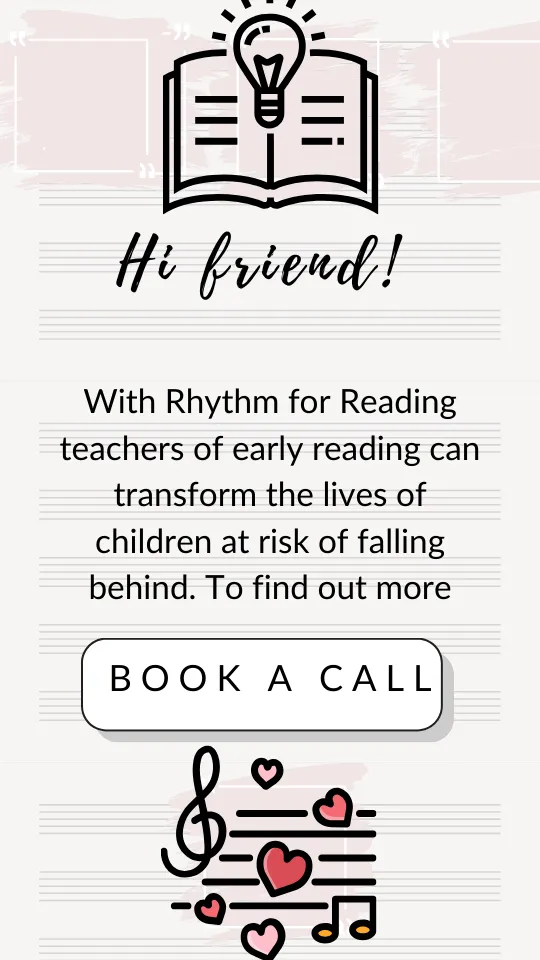Rhythm, reading and reciprocation: Why children need time and spaces to play
A new report on play was published this week: ‘Everything to play for: A plan to ensure every child in England can play’ by Ben Firth and Rachel Powell, on behalf of the Centre for Young Lives.
The report found that only half of the participating parents said they play with their youngest child every day. Only a third of parents (35%) said they play with their youngest “most days”. Another statistic of concern is that there have been closures of over 400 children’s playgrounds across England between 2012 and 2022. And between 2011 and 2023, the total annual park budgets for England decreased by more than £350 million pounds.
In the report children told the research team that they wanted to play outdoors more, but the lack of opportunities to do so and the addictive nature of screens trapped many of them into a downward spiral.
Children are suffering at the moment in terms of their health and wellbeing. They are missing out because they are not playing outside, and are developing problems with eyesight, sleep, mood, and behaviour. The report says these problems are associated with using screens and digital devices.
The NSPCC worked with YouGov to conduct a recent online survey. They collected data from 4,017 parents across the UK in May 2025. 63% of parents believed their own childhood was safer than their children’s, 54% believed it was easier, and 55% believed their own childhood was full of better experiences.
The importance of play for child development
There has been so much written about the influence that parents have on their children’s development, but relatively little has been said about children’s play as a factor in child development. This point was made In 2002 by Harvard Professor Stephen Pinker, in his wonderful book, The Blank Slate: The modern denial of human nature. Pinker’s powerful insight was that children with similar social heft and knowledge of the world build friendships based on reciprocity - as they would see themselves reflected in each other and would spend time together cooperating, competing and resolving any conflicts.
When The Guardian newspaper covered the new report on play, it asked whether children have enough time and space to build these important bonds with each other. If the streets are full of crime and children spend valuable time in the school playground standing in line, as they wait for lunch rather than playing with each other, then we must have forgotten why play matters.
Let’s imagine for a moment that we are watching children playing cooperatively. They are so engrossed in their game that they lose track of time. They have an amazing sense of freedom because they are so completely involved in their play - whichever type of play that might be.
Although it’s fun and spontaneous, but play is also rich and interesting. When children play together, each of them has their own reason for investing their energy in, for instance a make-believe game. Each child is motivated by vague feelings that might provoke uncertainty or curiosity and this is why they bring their own ideas, aspirations and intentions to the game. For example, one child might want to create a game around unfairness, and another might want to explore what it feels like to be powerful. Through the imagination the children concoct a scenario that gives each of them a chance to amplify the 'niggle' that they sense they need to explore and express using their emotional intelligence.
Themes of danger, threat, death and dying are explored through imagined worlds and stories. In fantasy play, perhaps one child is always cast as the perpetrator, another is always the victim and another is always the hero. Skirmishes, rough and tumble, and play fighting are accompanied by smiles and laughter. If playful aggression ‘crosses a boundary’ the smiles flip over into anger and the 'bubble' of the shared scenario bursts.
Emotional intelligence develops through play
The children repair the damage to their relationships in their real life - having abandoned the game. To avoid such a breakdown, they tend to monitor their friends’ signals. Being able to sustain a game is a feat of stamina as well as emotional intelligence. The routines of role play and repetitive stories that become favorites among friends may seem dull compared to a newer snazzier spectrum of video games but there’s a world of difference. You can’t negotiate with a video game, you can’t repair a conflict with a video game and you can’t feel the shock of causing real life harm to your friend in a video game. These life lessons are simply missed, even if the video game is exciting, clever, noisy and fun.
You see play is not fluffy. It’s been described as blended nervous system state which means that during play children feel safe enough to confront uncomfortable feelings of threat, danger and vulnerability because the context of play is not threatening. It allows time and space to explore the big scary feelings of fear while maintaining a playful state of social engagement, bonding, trust and reciprocation.
This state is always in flux. The social flavour of the play is changing all the time as children are constantly interpreting the way the game is being played. Too much aggression becomes overwhelming and threatening, and too much caution becomes boring. The delicate balance between play versus getting hurt or frightened is something that children intuitively dial up and down.
Sensitivity to rhythm also develops during play
There’s also rhythm in playfulness because play is repetitive, rewarding and fun. If we think about simple games played with infants such as 'peek-a-boo', or bouncing games and circle games that young children enjoy, or those that older children play, such as clapping games and skipping games, in each case, the structure of the game is based on different forms of rhythm.
'Peek-a-boo' is all about the rhythm of anticipation and surprise. Bouncing games are about predictable rhythm in motion and anticipation of a sudden change. Circle games involve staying in time and coordinating with others, such as falling to the ground together. And clapping games and skipping games, for older children are intricate and are highly rewarding, as they develop close coordination, proximity and joint mastery of the skills of the clapping and skipping patterns.
If you’d like to explore rhythm-based games, I’ve created a workbook, 'Joyful June' - it is an invitation to bring rhythm into the classroom this month. You can sign up here for a webinar or for the newsletter and receive the free 20 page workbook. This week, the webinar is on Thursday at 8.00 PM London UK time. Hope to see you there!
Enjoy this post? Why not keep reading...







